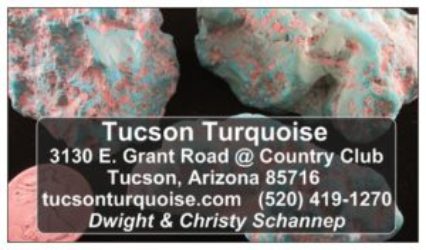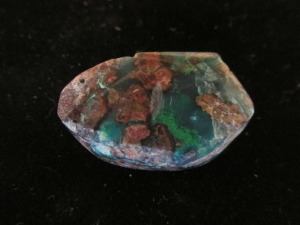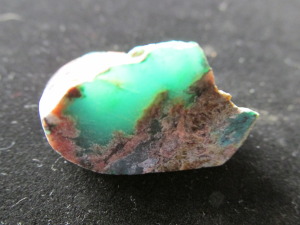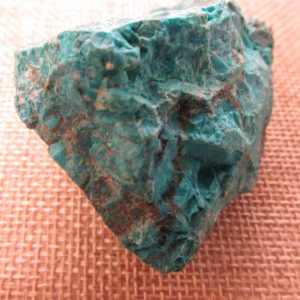
Chrysocolla (picture above) is often mistaken for Turquoise
First of all, Arizona has many mines, and people refer to us as the “Copper State.” Secondly, we often have enthusiastic people come into our store in Tucson, who are sure that they find turquoise in the tailing piles of nearby mines. Most noteably, as much as I would like to share in their joy, I often have to tell people that they have chryscolla. As a result, I explain my conclusion by following up with my observations of the visible fractures and the often waxy appearance.
In other words, Chrysocolla is not nearly as valuable as turquoise. Moreover, it makes a great for decorative rock in the yard, but it is typically too brittle to cut and shape for jewelry. Most notably, if you decorate your yard with this rock, please know that it should not be too close to plants. Above all, the intense copper content, which colors this rock “blue,” will leach into the soil and kill your plants!
- Turquoise is hydrous copper and aluminum phosphate.
Chrysocolla :
First of all, Chrysocolla is a mineral that can be soft and fragile.
Secondly, the luster of typical Chrysocolla is dull or waxy and is too brittle for jewelry uses.
Thirdly, Chrysocolla exhibits a wide range of Mohs hardness ranging from 2 through 7, which depends on the amount of silica content when the stone is forming.
Chrysocolla Chalcedony is Gem Silica and is stabile enough to use in jewelry. Most notably, it is a heavily silicified form of chrysocolla that forms in quartz deposits and can be very hard and approach a hardness of 7.
Turquoise:
A big difference between Chrysocolla and Turquoise is hardness. In conclusion, Chrysocolla can be brittle and often contains multiple fractures.
A field test: Chrysocolla or Turquoise?
Lick your finger and touch the rock specimen. Above all, if the rock feels “sticky” or “tacky” as you touch the rock with your wet finger, the rock is may be Chrysocolla! Your blue covered rock may also be Copper Ore. Consequently, to learn more about chrysocolla, please click HERE
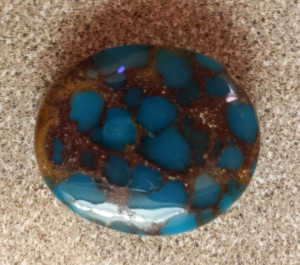
Tucson Turquoise 1990 – 2024 © Schannep Ventures L.L.C. ALL RIGHTS RESERVED
